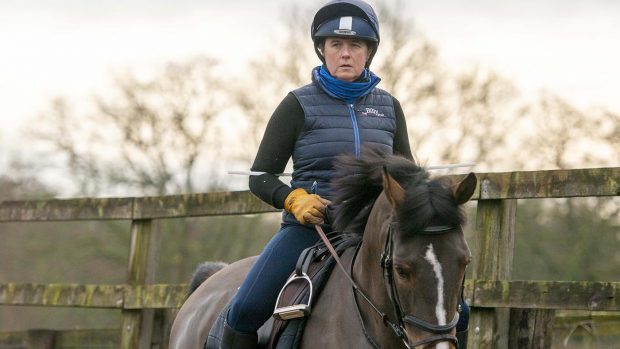A rider’s lack of flexibility, strength and fitness can severely limit their ability to perform, but by following the exercises in our videos, a relatively small investment in time can have far reaching positive effects on your performance as a rider. Here’s how to improve your horse rider abdominal strength, thanks to some expert advice…
You should warm up your muscles by taking a brisk walk, or similar, after riding before performing any of these exercises. If you suffer any ongoing physical issues, we recommend you speak to a health professional before you start.
Each exercise is shown at different levels of difficulty, so you can choose the version that is most suitable to your current physical condition and then progress through the levels as you improve.
How to improve your horse rider abdominal strength
Your abdominal muscles are key to maintaining your position in the saddle, enabling you to be an effective rider. The following exercises will benefit riders of all standards. You can also test and work on improving the strength of your abdominals in the saddle by working without stirrups, particularly by going from rising to sitting trot and by riding canter to trot transitions.
Exercise one: pullover
This exercise works to stabilise your shoulder blades and improve abdominal strength, allowing your to improve your posture and seat in the saddle.
Exercise two: V sits
This exercise will help you improve the strength of your hip flexors while working your abdominals and core muscles to improve your body awareness and control of your hips and lower back. Ultimately this will work to reduce unnecessary movement or bouncing in the saddle.
Exercise three: rollout on ball
This exercise works to strengthen your core combined with extension of the hips allowing you to work on controlling your lower back. The combination of back strength with activation of the glutes will improve your seat and ability to lengthen your leg in the saddle.
- Don’t have an exercise ball? Try this one from amazon.co.uk
About Dee Holdsworth
Dee is the founder of Dynamic Sports Therapy. A keen rider, she has competed at national level and was part of the small stables team at the London 2012 Olympics. Dee works with some of the world’s leading horse and rider combinations, including some of those on track for Rio 2016.
Dee is an equestrian sports science graduate from Hartpury College and went on to complete the International Therapy Examination Council Diploma in equine sports massage, delivered by veterinary chartered physiotherapist Mary Bromiley, and now stands as the ESMA Chairman.
Dee is a level four sports massage therapist with the Sports Massage Association. She also holds certificates in human and equine kinesiology taping and muscle energy techniques, as well as using deep oscillation therapy.
This video is brought to you in association with fitnesstroop.co.uk (Katie Brighton-Jones), shadowplay.co.uk (Philip E James) and performbetter.co.uk.
You might also be interested in:

Three simple exercises to get you started on your riding fitness journey

How to improve your balance to help boost your riding skills

Subscribe to Horse & Hound magazine today – and enjoy unlimited website access all year round
Horse & Hound magazine, out every Thursday, is packed with all the latest news and reports, as well as interviews, specials, nostalgia, vet and training advice. Find how you can enjoy the magazine delivered to your door every week, plus options to upgrade your subscription to access our online service that brings you breaking news and reports as well as other benefits.



